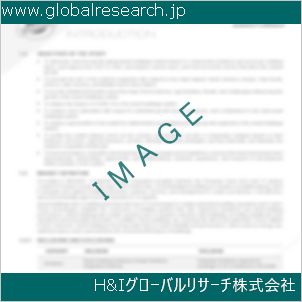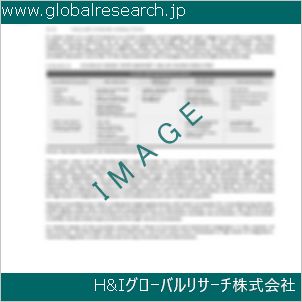Table of Contents
1 Industry Overview of Oxygen-18
1.1 Definition and Specifications of Oxygen-18
1.1.1 Definition of Oxygen-18
1.1.2 Specifications of Oxygen-18
1.2 Classification of Oxygen-18
1.3 Applications of Oxygen-18
1.3.1 Nuclear Application
1.3.2 Non-Nuclear Application
1.4 Industry Chain Structure of Oxygen-18
1.5 Industry Overview and Major Regions Status of Oxygen-18
1.5.1 Industry Overview of Oxygen-18
1.5.2 Global Major Regions Status of Oxygen-18
1.6 Industry Policy Analysis of Oxygen-18
1.7 Industry News Analysis of Oxygen-18
2 Manufacturing Cost Structure Analysis of Oxygen-18
2.1 Raw Material Suppliers and Price Analysis of Oxygen-18
2.2 Equipment Suppliers and Price Analysis of Oxygen-18
2.3 Labor Cost Analysis of Oxygen-18
2.4 Other Costs Analysis of Oxygen-18
2.5 Manufacturing Cost Structure Analysis of Oxygen-18
2.6 Manufacturing Process Analysis of Oxygen-18
3 Technical Data and Manufacturing Plants Analysis of Oxygen-18
3.1 Capacity and Commercial Production Date of Global Oxygen-18 Major Manufacturers in 2023
3.2 Manufacturing Plants Distribution of Global Oxygen-18 Major Manufacturers in 2023
3.3 R&D Status and Technology Source of Global Oxygen-18 Major Manufacturers in 2023
3.4 Raw Materials Sources Analysis of Global Oxygen-18 Major Manufacturers in 2023
4 Capacity, Production and Revenue Analysis of Oxygen-18 by Regions, Types and Manufacturers
4.1 Global Capacity, Production and Revenue of Oxygen-18 by Regions 2019-2024
4.2 Global and Major Regions Capacity, Production, Revenue and Growth Rate of Oxygen-18 2019-2024
4.3 Global Capacity, Production and Revenue of Oxygen-18 by Types 2019-2024
4.4 Global Capacity, Production and Revenue of Oxygen-18 by Manufacturers 2019-2024
5 Price, Cost, Gross and Gross Margin Analysis of Oxygen-18 by Regions, Types and Manufacturers
5.1 Price, Cost, Gross and Gross Margin Analysis of Oxygen-18 by Regions 2019-2024
5.2 Price, Cost, Gross and Gross Margin Analysis of Oxygen-18 by Types 2019-2024
5.3 Price, Cost, Gross and Gross Margin Analysis of Oxygen-18 by Manufacturers 2019-2024
6 Consumption Volume, Consumption Value and Sale Price Analysis of Oxygen-18 by Regions, Types and Applications
6.1 Global Consumption Volume and Consumption Value of Oxygen-18 by Regions 2019-2024
6.2 Global and Major Regions Consumption Volume, Consumption Value and Growth Rate of Oxygen-18 2019-2024
6.3 Global Consumption Volume and Consumption Value of Oxygen-18 by Types 2019-2024
6.4 Global Consumption Volume and Consumption Value of Oxygen-18 by Applications 2019-2024
6.5 Sale Price of Oxygen-18 by Regions 2019-2024
6.6 Sale Price of Oxygen-18 by Types 2019-2024
6.7 Sale Price of Oxygen-18 by Applications 2019-2024
6.8 Market Share Analysis of Oxygen-18 by Different Sale Price Levels
7 Supply, Import, Export and Consumption Analysis of Oxygen-18
7.1 Supply, Consumption and Gap of Oxygen-18 2019-2024
7.2 Global Capacity, Production, Price, Cost, Revenue, Supply, Import, Export and Consumption of Oxygen-18 2019-2024
7.3 USA Capacity, Production, Price, Cost, Revenue, Supply, Import, Export and Consumption of Oxygen-18 2019-2024
7.4 EU Capacity, Production, Price, Cost, Revenue, Supply, Import, Export and Consumption of Oxygen-18 2019-2024
7.5 China Capacity, Production, Price, Cost, Revenue, Supply, Import, Export and Consumption of Oxygen-18 2019-2024
7.6 Japan Capacity, Production, Price, Cost, Revenue, Supply, Import, Export and Consumption of Oxygen-18 2019-2024
8 Major Manufacturers Analysis of Oxygen-18
8.1 Manufacturer One
8.1.1 Company Profile
8.1.2 Product Picture and Specifications
8.1.2.1 Type I
8.1.2.2 Type II
8.1.2.3 Type III
8.1.3 Capacity, Production, Price, Cost, Gross and Revenue
8.1.4 Contact Information
8.2 Manufacturer Two
8.2.1 Company Profile
8.2.2 Product Picture and Specifications
8.2.2.1 Type I
8.2.2.2 Type II
8.2.2.3 Type III
8.2.3 Capacity, Production, Price, Cost, Gross and Revenue
8.2.4 Contact Information
8.3 Manufacturer Three
8.3.1 Company Profile
8.3.2 Product Picture and Specifications
8.3.2.1 Type I
8.3.2.2 Type II
8.3.2.3 Type III
8.3.3 Capacity, Production, Price, Cost, Gross and Revenue
8.3.4 Contact Information
8.4 Manufacturer Four
8.4.1 Company Profile
8.4.2 Product Picture and Specifications
8.4.2.1 Type I
8.4.2.2 Type II
8.4.2.3 Type III
8.4.3 Capacity, Production, Price, Cost, Gross and Revenue
8.4.4 Contact Information
8.5 Manufacturer Five
8.5.1 Company Profile
8.5.2 Product Picture and Specifications
8.5.2.1 Type I
8.5.2.2 Type II
8.5.2.3 Type III
8.5.3 Capacity, Production, Price, Cost, Gross and Revenue
8.5.4 Contact Information
…
9 Marketing Trader or Distributor Analysis of Oxygen-18
9.1 Marketing Channels Status of Oxygen-18
9.2 Traders or Distributors with Contact Information of Oxygen-18 by Regions
9.3 Ex-work Price, Channel Price and End Buyer Price Analysis of Oxygen-18
9.4 Regional Import, Export and Trade Analysis of Oxygen-18
10 Industry Chain Analysis of Oxygen-18
10.1 Upstream Major Raw Materials Suppliers Analysis of Oxygen-18
10.1.1 Major Raw Materials Suppliers with Contact Information Analysis of Oxygen-18
10.1.2 Major Raw Materials Suppliers with Supply Volume Analysis of Oxygen-18 by Regions
10.2 Upstream Major Equipment Suppliers Analysis of Oxygen-18
10.2.1 Major Equipment Suppliers with Contact Information Analysis of Oxygen-18
10.2.2 Major Equipment Suppliers with Product Pictures Analysis of Oxygen-18 by Regions
10.3 Downstream Major Consumers Analysis of Oxygen-18
10.3.1 Major Consumers with Contact Information Analysis of Oxygen-18
10.3.2 Major Consumers with Consumption Volume Analysis of Oxygen-18 by Regions
10.4 Supply Chain Relationship Analysis of Oxygen-18
11 Development Trend of Analysis of Oxygen-18
11.1 Capacity, Production and Revenue Forecast of Oxygen-18 by Regions and Types
11.1.1 Global Capacity, Production and Revenue of Oxygen-18 by Regions 2024-2029
11.1.2 Global and Major Regions Capacity, Production, Revenue and Growth Rate of Oxygen-18 2024-2029
11.1.3 Global Capacity, Production and Revenue of Oxygen-18 by Types 2024-2029
11.2 Consumption Volume and Consumption Value Forecast of Oxygen-18 by Regions, Types and Applications
11.2.1 Global Consumption Volume and Consumption Value of Oxygen-18 by Regions 2024-2029
11.2.2 Global and Major Regions Consumption Volume, Consumption Value and Growth Rate of Oxygen-18 2024-2029
11.2.3 Global Consumption Volume and Consumption Value of Oxygen-18 by Types 2024-2029
11.2.4 Global Consumption Volume and Consumption Value of Oxygen-18 by Applications 2024-2029
11.3 Supply, Import, Export and Consumption Forecast of Oxygen-18
11.3.1 Supply, Consumption and Gap of Oxygen-18 2024-2029
11.3.2 Global Capacity, Production, Price, Cost, Revenue, Supply, Import, Export and Consumption of Oxygen-18 2024-2029
11.3.3 USA Capacity, Production, Price, Cost, Revenue, Supply, Import, Export and Consumption of Oxygen-18 2024-2029
11.3.4 EU Capacity, Production, Price, Cost, Revenue, Supply, Import, Export and Consumption of Oxygen-18 2024-2029
11.3.5 China Capacity, Production, Price, Cost, Revenue, Supply, Import, Export and Consumption of Oxygen-18 2024-2029
11.3.6 Japan Capacity, Production, Price, Cost, Revenue, Supply, Import, Export and Consumption of Oxygen-18 2024-2029
12 New Project Investment Feasibility Analysis of Oxygen-18
12.1 New Project SWOT Analysis of Oxygen-18
12.2 New Project Investment Feasibility Analysis of Oxygen-18
13 Conclusion of the Global Oxygen-18 (CAS 32767-18-3) Industry 2024 Market Research Report
| ※参考情報 酸素18(Oxygen-18、CAS 32767-18-3)は、酸素の同位体の一つであり、質量数が18の酸素原子を指します。自然界には酸素が3種類の同位体(酸素-16、酸素-17、酸素-18)として存在しており、その中でも酸素-18は最も重い同位体です。酸素-16が約99.76%を占める中、酸素-18は約0.20%程度と、自然界では比較的少ない存在ですが、その特異な特性から多くの分野で利用されています。 酸素-18は、2つの中性子と8つの陽子を持つ原子です。この同位体の重要な特徴の一つは、核スピンを持たないことであり、これは核磁気共鳴(NMR)やその他の分光学的手法において有利に働きます。酸素-18は、通常の酸素と異なる化学特性を持つわけではありませんが、同位体比の違いから、特定の化学反応や物理プロセスを解析するための手段として利用されます。 酸素-18の用途は多岐に渡ります。特に、地球科学や気候学の分野においてその特性が重視され、多くの研究が進められています。例えば、氷のコアや海洋サンプルに含まれる酸素-18の比率を分析することで、古気候の変遷を追跡することができます。この方法によって、過去の温度や降水量の変動を判断し、地球温暖化や気候変動に関する知見を深めることが可能となります。 また、酸素-18は、水分子に含まれることがあるため、環境水や生物の水分バランスの研究にも利用されます。特に、植物の光合成や水の蒸発散において、酸素-18の比率がどのように変化するかを調べることで、植物の生長状態や生態系の水の循環についての理解が深まります。 さらに、医療分野でも酸素-18は重要な役割を果たしています。例えば、PET(ポジトロン断層法)において、酸素-18が同位体標識に使用されます。酸素-18を含む化合物を体内に投与し、放射線を用いて体の内部を画像化することで、腫瘍や病変の位置を特定することが可能です。この技術は、特にがんの診断や治療計画において広く利用されています。 酸素-18に関連する技術としては、同位体比質量分析法(IRMS)が挙げられます。この技術を用いることで、酸素-18と酸素-16の比率を高精度で測定することができます。これにより、物質の起源や移動、さらには反応のメカニズムを解明するための貴重な情報が得られます。 また、酸素-18は、化学合成反応や新素材の開発などにも利用され、反応の進行や生成物への影響を調査するためのトレーサーとしても重要です。さらに、環境モニタリングや食物の起源追跡にも応用され、食品の安全性や品質の評価に役立っています。 このように、酸素-18はその特異な性質から多様な分野で重要な役割を果たしており、今後も新たな応用や技術の進展が期待されます。特に、気候変動や環境問題の解決に向けた研究が進む中で、酸素-18の研究はますます重要性を増していくことでしょう。今後の研究の進展によって、私たちの理解が深まり、持続可能な社会の構築に貢献することが期待されます。 |
❖ 免責事項 ❖
http://www.globalresearch.jp/disclaimer












